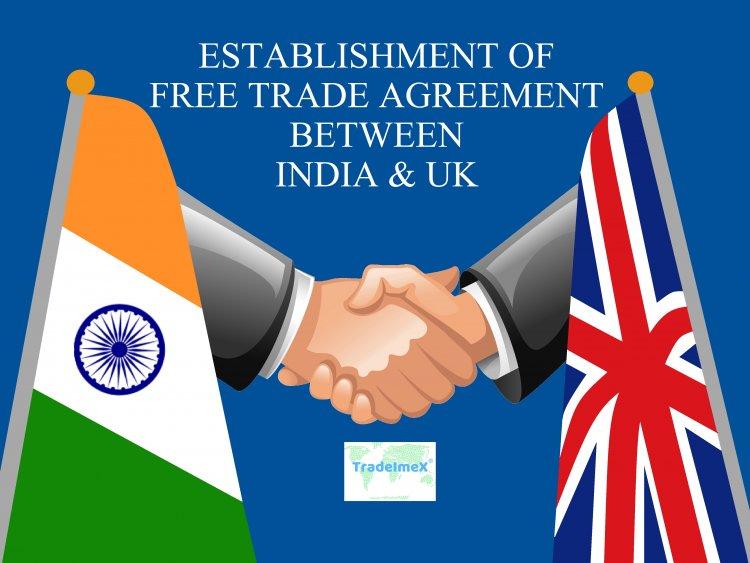The long-anticipated India-UK trade agreement is poised to reach a significant milestone, with sources indicating that the deal is likely to be signed by the end of July. According to the Commerce Secretary, the pact is currently undergoing final legal scrubbing to ensure all provisions are airtight before formal endorsement. This development marks a crucial step forward in strengthening economic ties between the two nations, promising to enhance bilateral trade and investment opportunities in the near future.
India UK trade agreement set for signing by July end as legal scrubbing progresses
The India-UK trade agreement is rapidly moving towards its final stages, with key stakeholders confirming that legal scrubbing is actively underway. This phase involves a meticulous review of all contractual clauses to ensure clarity, enforceability, and alignment with both countries’ regulatory frameworks. Officials from both sides are working closely to address any outstanding issues related to tariffs, market access, and intellectual property safeguards. The commerce secretary highlighted that the collaboration between legal teams aims to facilitate a smooth seal of the pact, aiming for a signing ceremony by the end of July.
Key Focus Areas Under Review:
- Tariff reductions and customs procedures
- Standards and regulatory compatibility
- Dispute resolution mechanisms
- Investment protections and market access
| Sector | Expected Benefits | Timeline |
|---|---|---|
| Automobiles | Reduced tariffs, enhanced exports | Q3 2024 |
| Pharmaceuticals | Expanded market access, trademark protection | Immediate post-signing |
| Textiles | Streamlined customs, cost savings | Q4 2024 |
| IT & Services | Smoother visa norms, collaboration incentives | Early 2025 |
Key provisions of the India UK pact aim to boost bilateral commerce and investment flows
The upcoming trade agreement between India and the United Kingdom lays down several strategic measures designed to enhance bilateral economic relations. Key provisions focus on reducing tariffs across a wide range of sectors, facilitating smoother market access for both Indian and British companies. Additionally, the pact emphasizes streamlining customs procedures and improving regulatory coherence, ensuring faster clearance of goods and lowering transaction costs. This reduction in non-tariff barriers is expected to particularly benefit sectors such as pharmaceuticals, automotive, IT services, textiles, and agriculture.
Investment flows stand to gain from strengthened protections and more transparent dispute resolution mechanisms. The agreement also introduces a dedicated framework to support startups and MSMEs, fostering innovation and cross-border collaboration. A summary of critical elements includes:
- Tariff cuts on over 85% of goods traded between the two nations
- Enhanced digital trade rules to protect data flows and privacy
- Commitment to sustainable development with environmentally conscious trade policies
- Investor protection clauses to promote confidence among foreign direct investors
- Procedural improvements like mutual recognition of standards and certifications
| Sector | Expected Benefit | Timeline for Impact |
|---|---|---|
| Pharmaceuticals | Increased market access, reduced import duties | Within 1 year |
| Information Technology | Facilitated data flows, easier service integration | 6-12 months |
| Textiles & Apparel | Lower export tariffs, compliance simplification | 1-2 years |
| Agri-products | Reduced customs delays, expanded quotas | 1 year |
Experts recommend streamlined regulatory frameworks to maximize trade deal benefits
Trade experts emphasize that to fully harness the advantages of the upcoming India-UK agreement, both nations must prioritize the simplification of existing regulatory processes. Complex and redundant compliance requirements have historically hindered seamless cross-border trade, leading to increased costs and prolonged clearance times. By aligning standards and removing bureaucratic bottlenecks, businesses can experience faster market access, reduced operational expenses, and enhanced competitiveness.
Key recommendations highlighted by specialists include:
- Implementation of unified customs procedures and digital documentation systems
- Mutual recognition of product standards and certifications
- Transparent dispute resolution mechanisms to build investor confidence
- Regular stakeholder consultations to adapt regulations dynamically
| Regulatory Aspect | Expected Benefit |
|---|---|
| Customs Simplification | Faster clearance, lower costs |
| Standards Alignment | Easier market entry |
| Digital Compliance Tools | Reduced paperwork |
| Dispute Mechanisms | Improved trade confidence |
Key Takeaways
As negotiations progress and legal scrubbing nears completion, the much-anticipated India-UK trade pact is poised for signing by the end of July. Both nations aim to leverage the agreement to deepen economic ties and unlock new opportunities for bilateral trade and investment. Stakeholders across industries will be closely watching the finalization of the deal, which promises to strengthen the long-standing partnership between the two countries.




